Final Project¶
Lébénè¶

Final project requirements¶
What does it do¶
My final project (Lébénè) is an intelligent dustbin designed to raise public awareness of the need to keep their environment clean. It’s made up of sensors that enable it to detect human presence within a certain radius of its position. Once the movement has been identified, it emits a sound that attracts the person’s attention, while displaying a message on its screen. This lets the person know that there’s a garbage can in case of need. If it detects that the person is closer to it, it asks the person to come and dispose of the garbage, should he or she have any. If the person throws rubbish into the garbage can, it prints a thank-you message on its screen to thank the person. Please note that this project is still in its early stages, and has a number of other features, such as the ability to play an awareness-raising message over the loudspeaker.
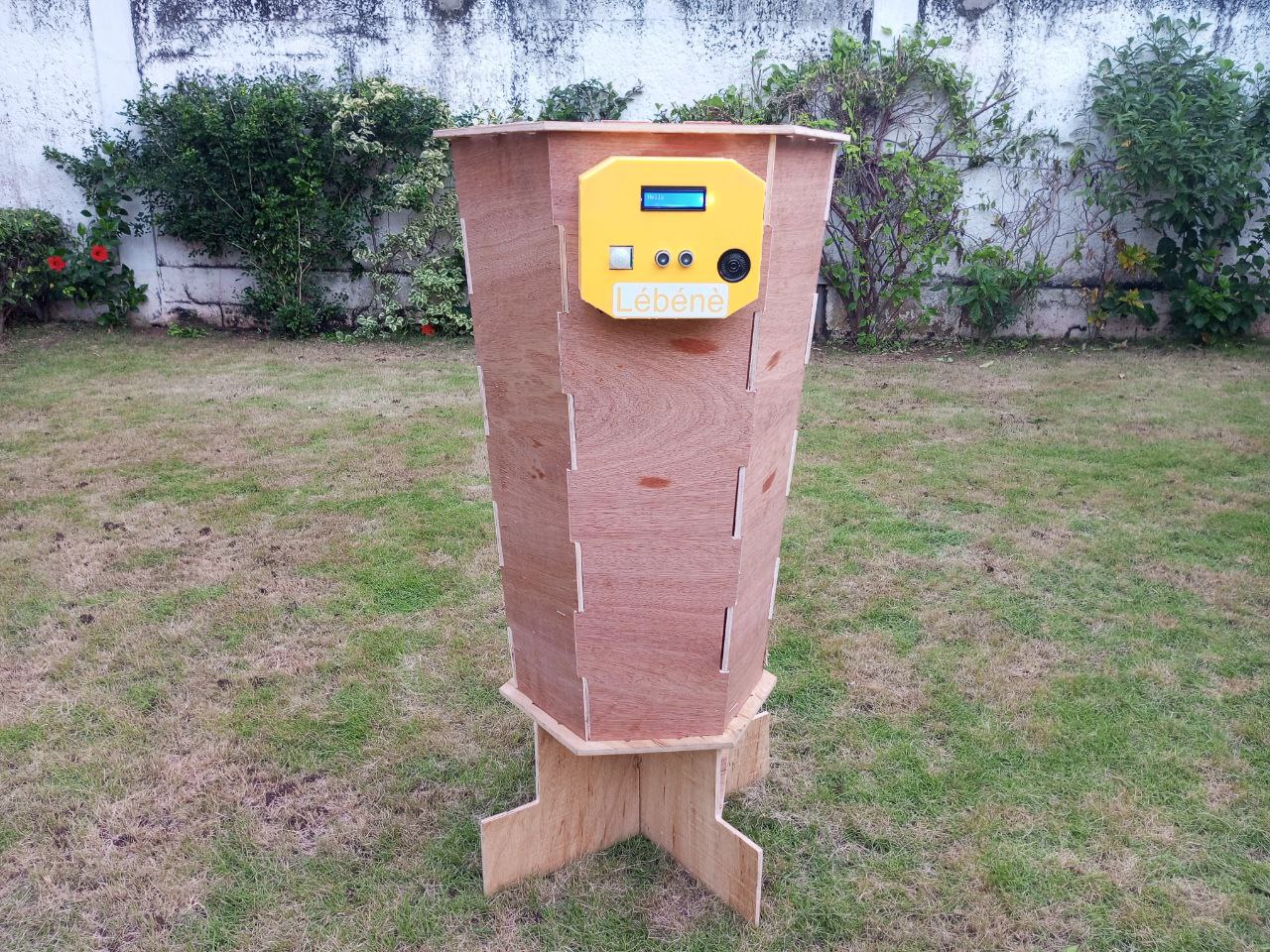
Who’s done what beforehand¶
During my research, I found many people who have realized this kind of project. But among them, I decided to choose one that is already operational and usable by customers who adopt it.
It’s a solution that makes waste containers “intelligent” and enables waste collection activities to be monitored and managed in real time! For more details, click here.

What I have designed¶
At this stage of the project, I’ve achieved 3 main designs:
First of all, I designed and produced the 2 boards that will manage the devices. One for the output devices and the second for the input devices.
Then I did the 2D and 3D modeling of the electronic box and the garbage can. Then I moved on to the production of these models.
What materials and components were used ? Where did they come from ? How much did they cost ?¶
Regarding these different questions, I can say that 99% of the materials to be used are already available in our fablab and there is only one component to be purchased on the local market. Here’s a summary table to answer all these questions.
Bill of Materials
| Description | Quantity | Source | Cost | link |
|---|---|---|---|---|
| Ultrasonic sensor | 1 | Amazon | $11.95 | Link |
| Motion sensor | 1 | Amazon | $3.398 | Link |
| LCD display 16*2 | 1 | Amazon | $8.495 | Link |
| Micro speaker | 1 | Amazon | $5.09 | Link |
| XIAO SAMD21 | 1 | Amazon | $14.90 | Link |
| XIAO ESP32C3 | 1 | Amazon | $16.90 | Link |
| Toggle switch | 1 | Amazon | $9.99 | Link |
| Power bank 5V-2A | 1 | Local market | $8.10 | — |
| Plywood 10 mm | 2 | Local market | $40.20 | — |
| 3D PLA filament | 300g | Amazon | $7.179 | Link |
| Red LED 1206 SMD | 1 | DIGI-KEY | $0,18 | Link |
| 4.99 Kohm Resistor 1206 | 1 | DIGI-KEY | $0,035 | Link |
| 0 ohm Resistor 1206 | 6 | DIGI-KEY | $0,12 | Link |
| 1x7 Female PinHeader THT | 4 | Amazon | $ 0.633 | Link |
| 1x4 Male PinHeader THT | 4 | Amazon | $ 0.5064 | Link |
| 1x6 Male PinHeader THT | 1 | Amazon | $ 0.2528 | Link |
| 1x3 Male PinHeader THT | 1 | Amazon | $ 0.1266 | Link |
| JST Connector | 1 | Amazon | $ 0.0866 | Link |
| Total = $128.1424 |
The parts and systems I have made¶
- Custom PCB controller board
Circuit design in Kicad
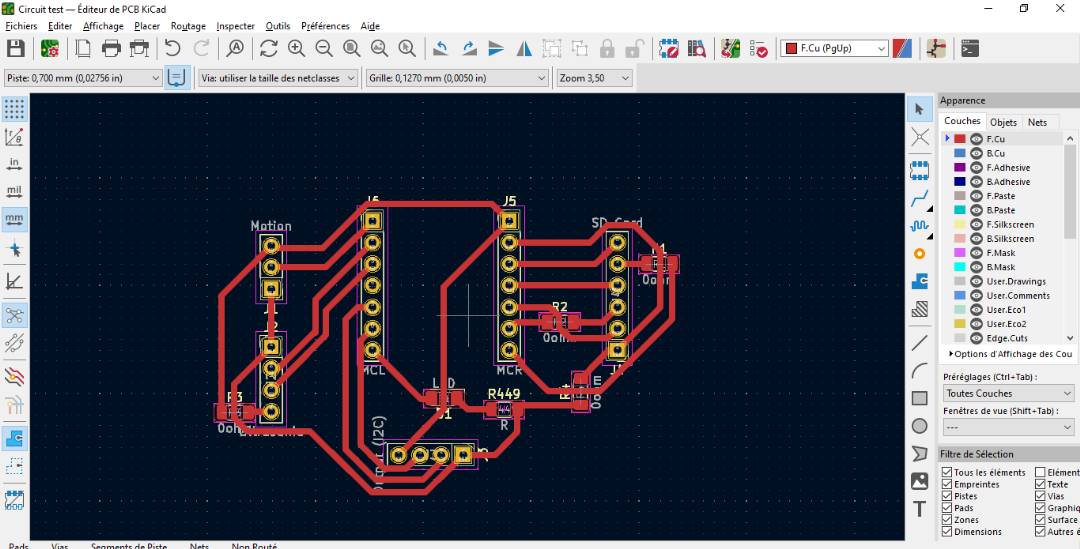
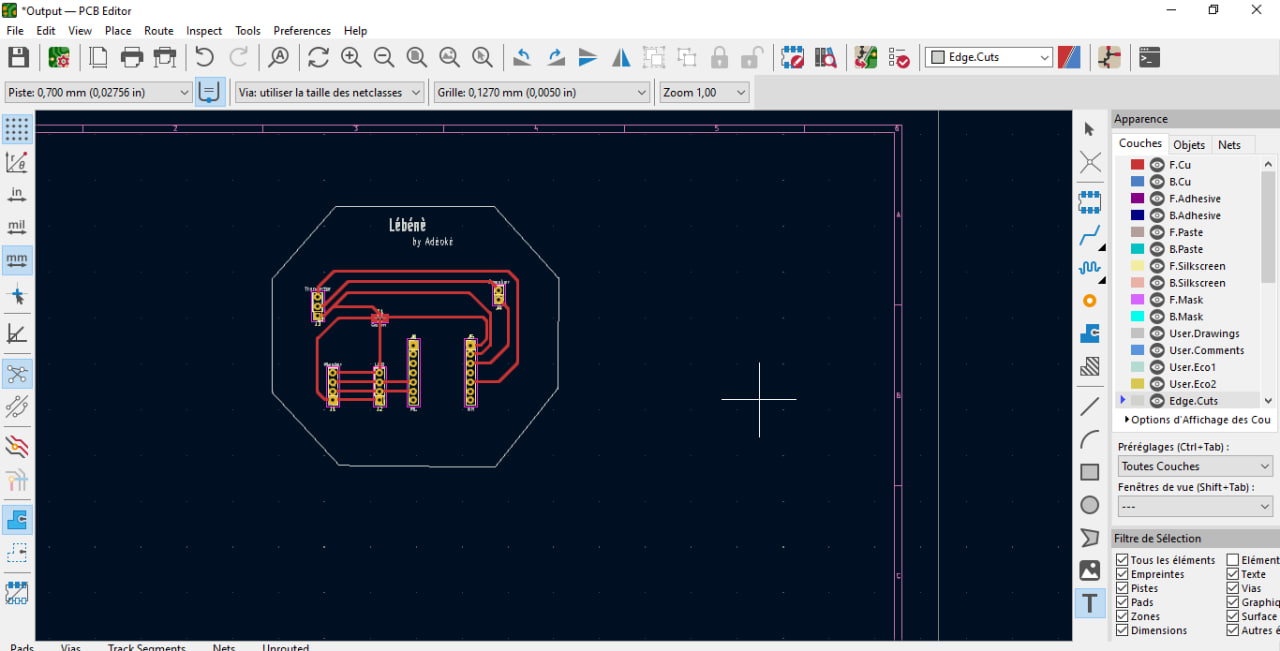
Milling

Soldering components onto the board
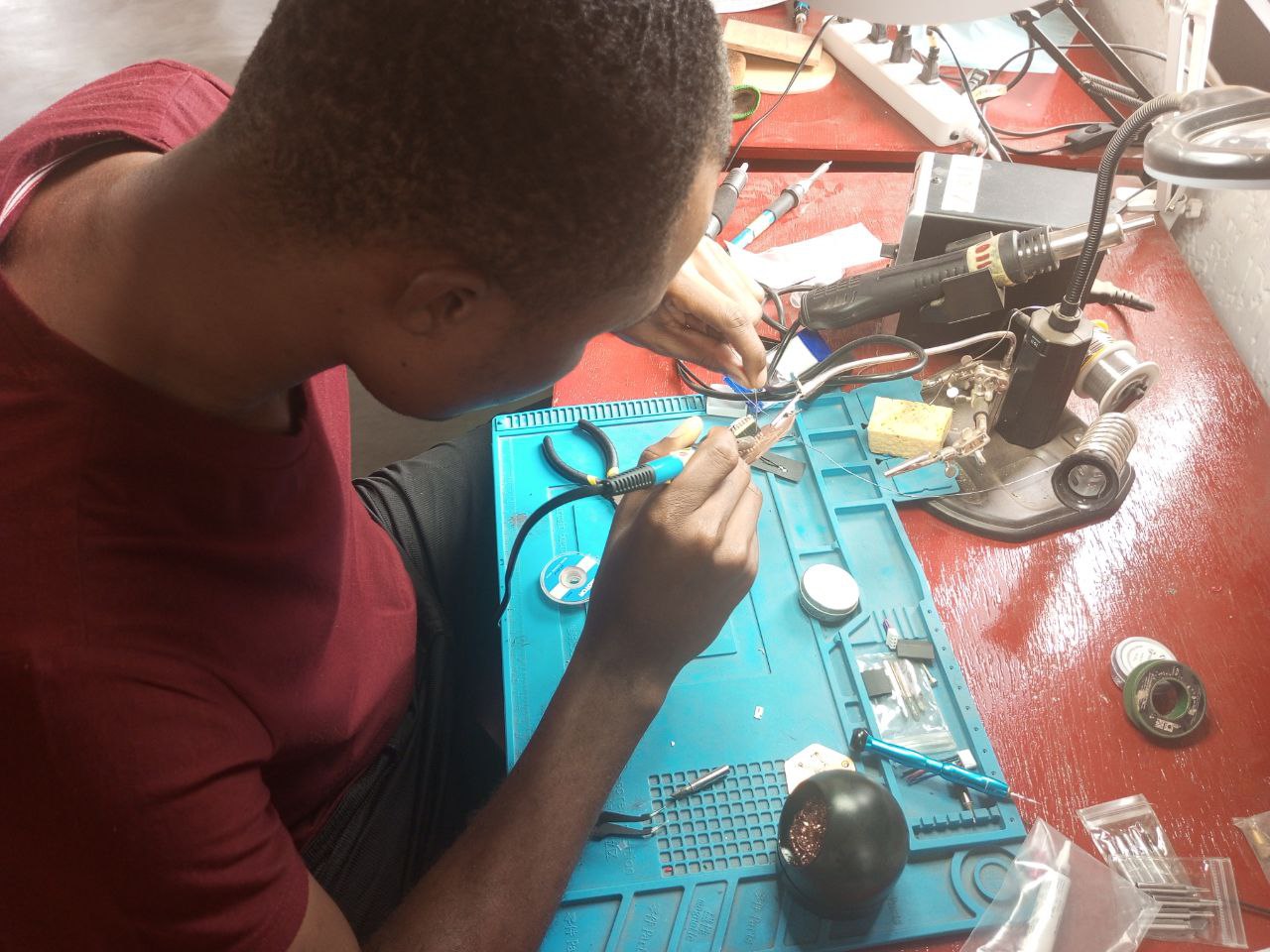
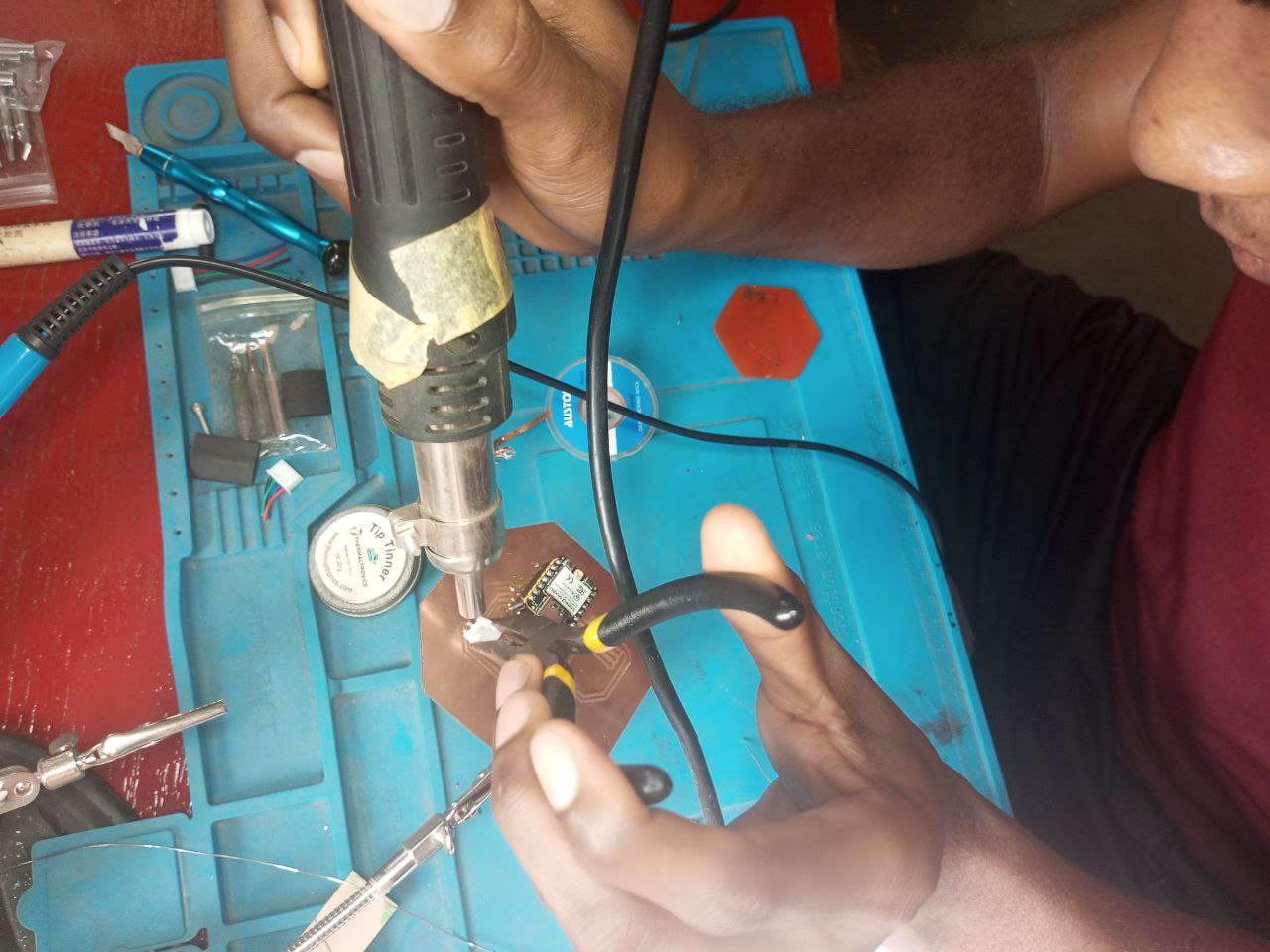
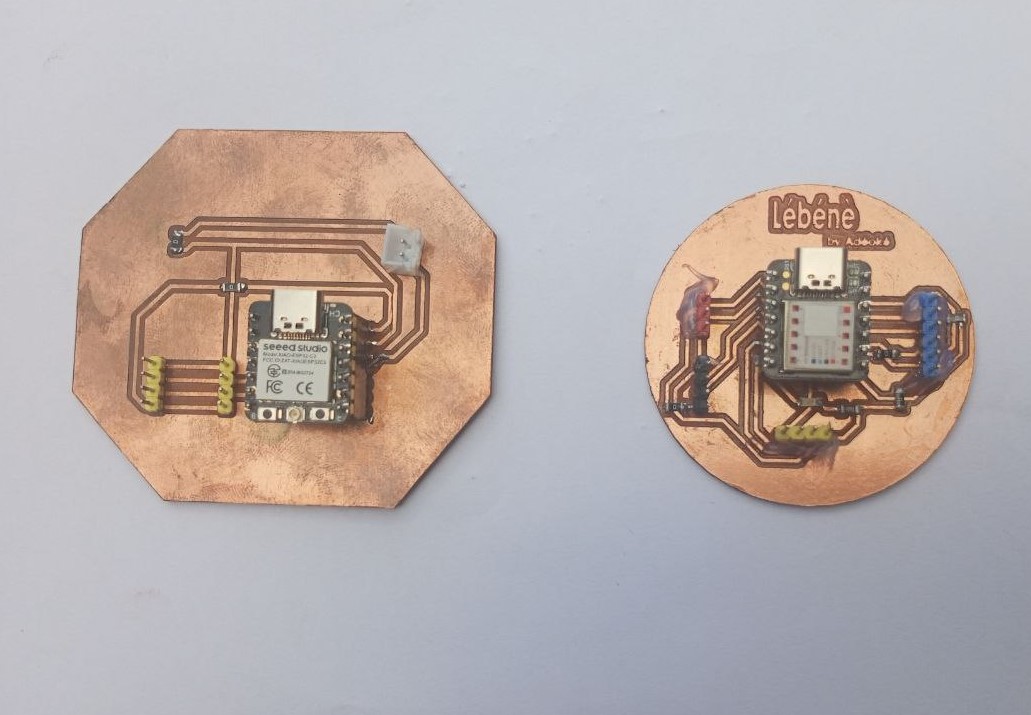
- The electronics box
3D modeling
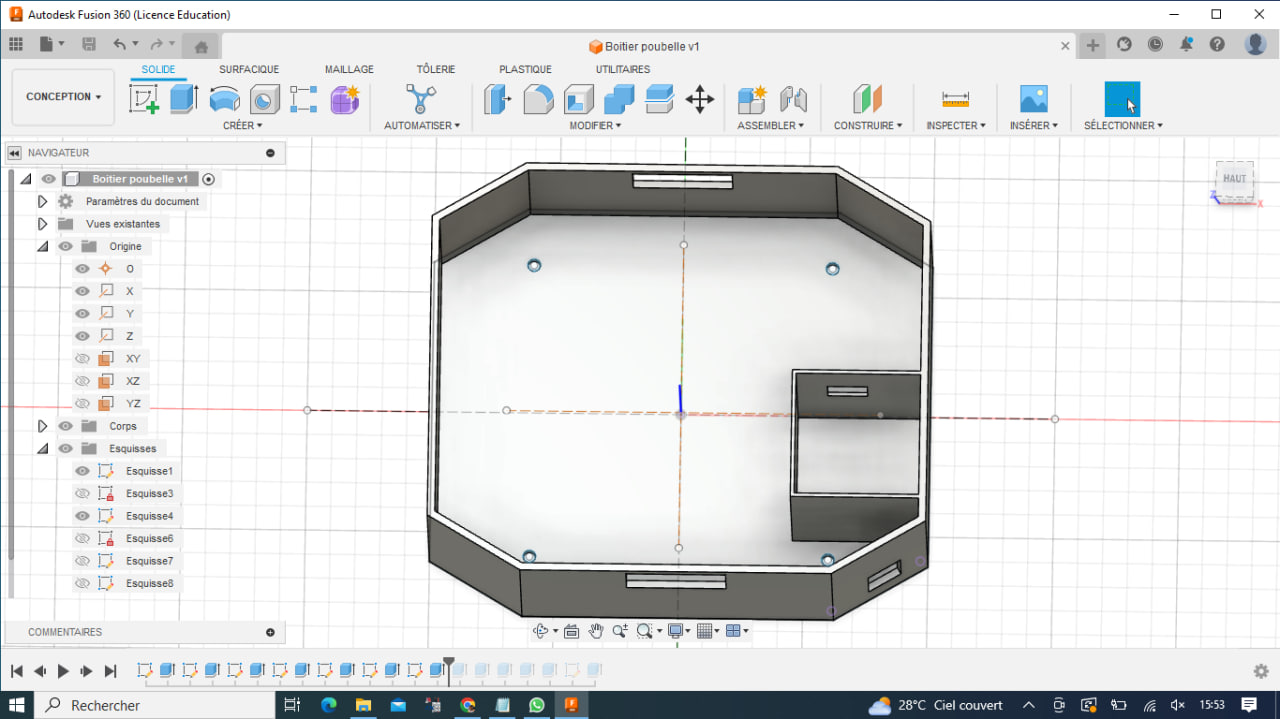

Printing
- The bin
To begin with, I modeled the various parts of the garbage can’s body.
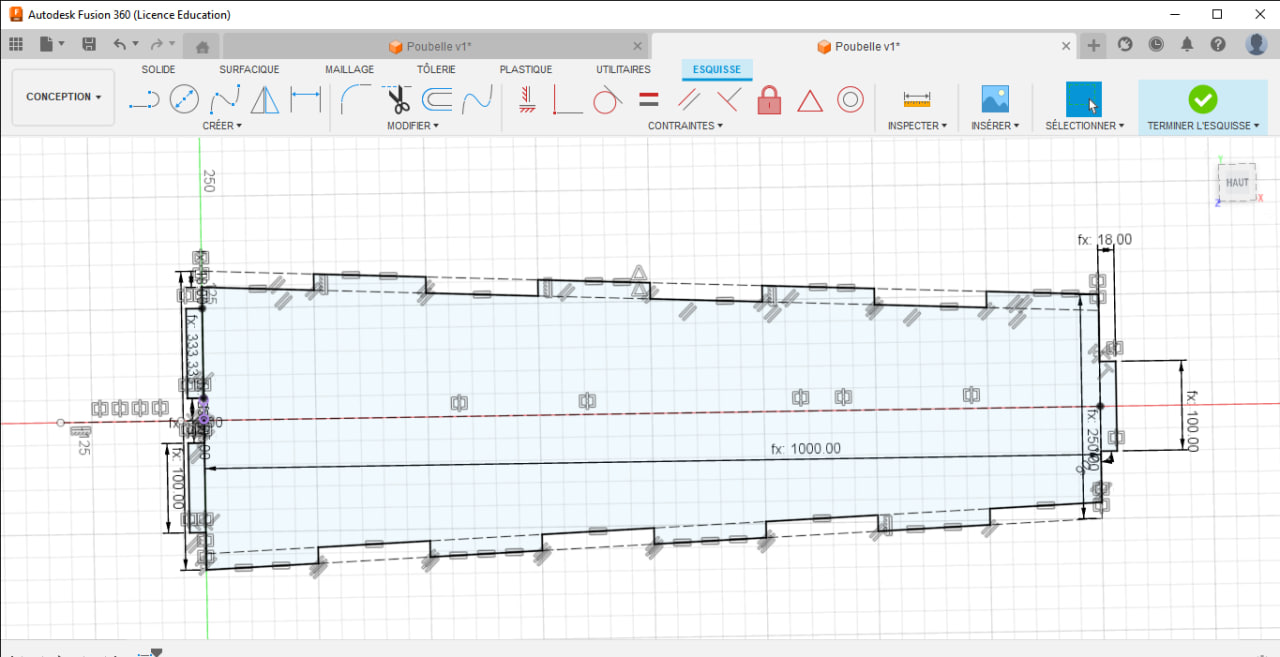
Then I started cutting
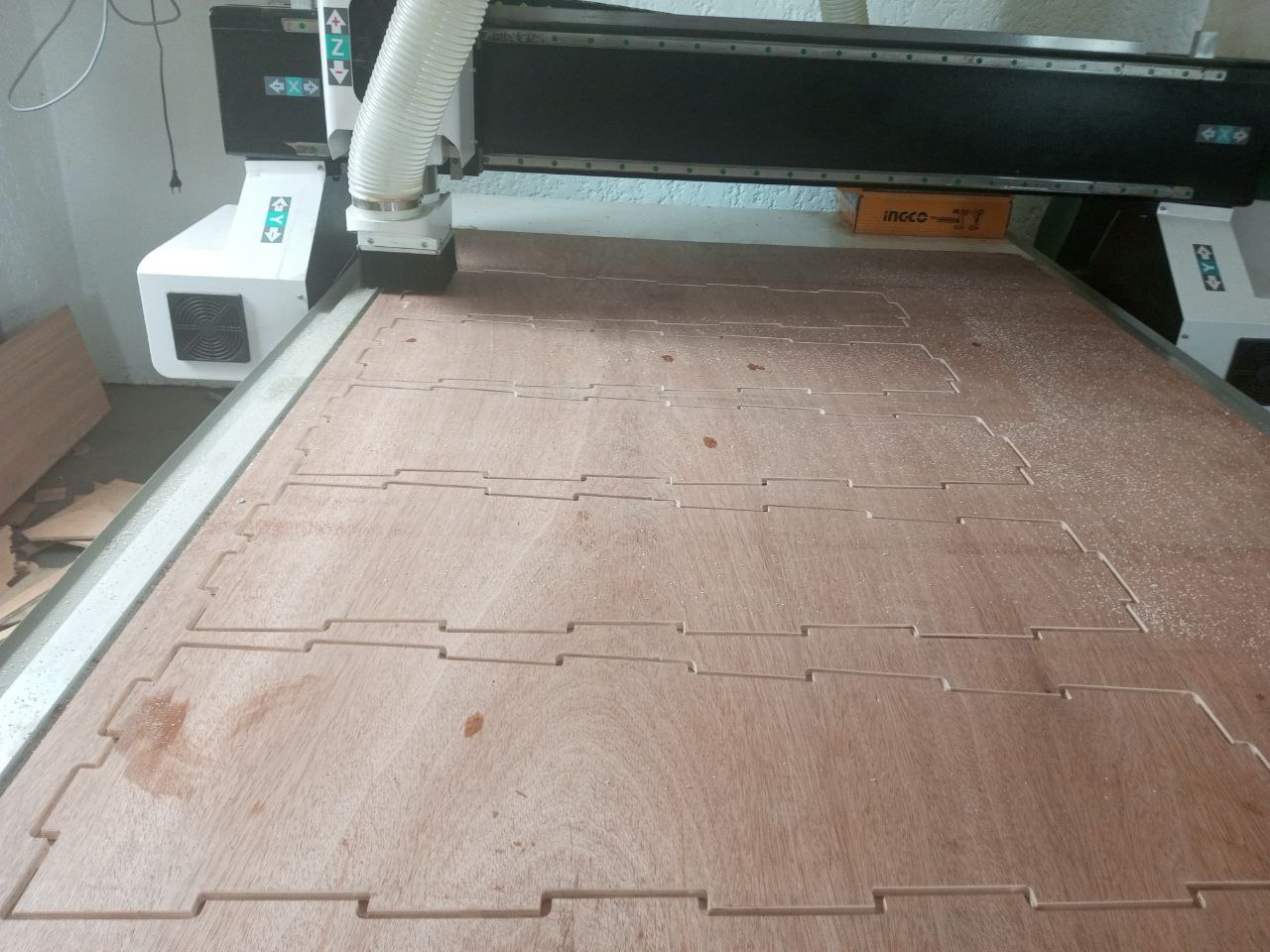
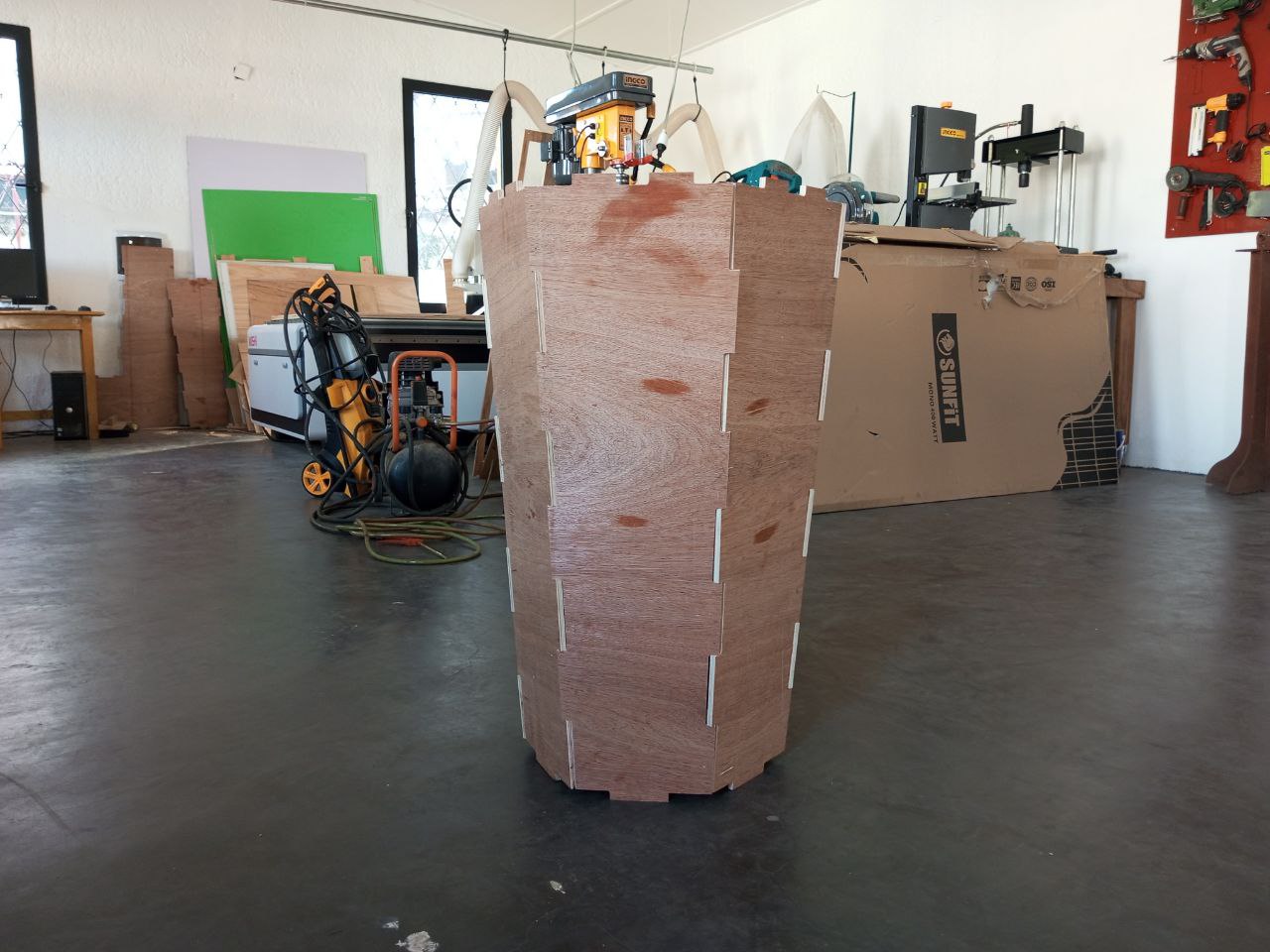
Modeling bottom cover
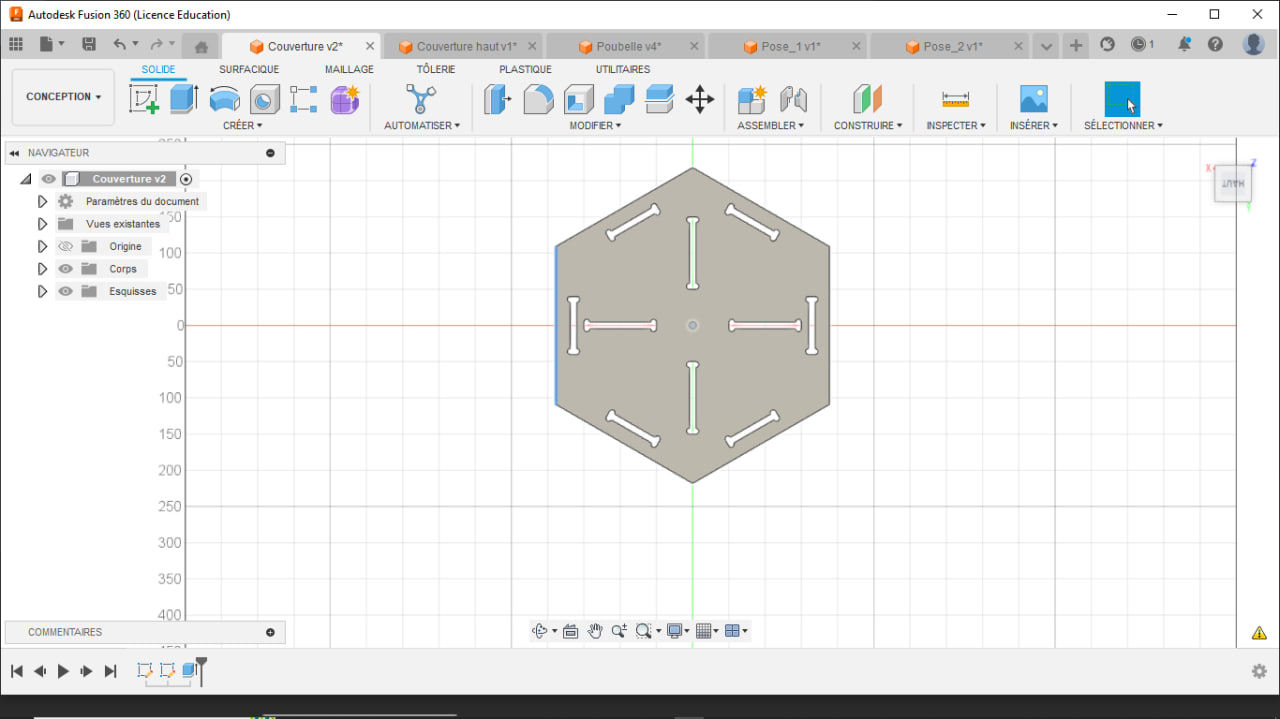
Modeling the top cover
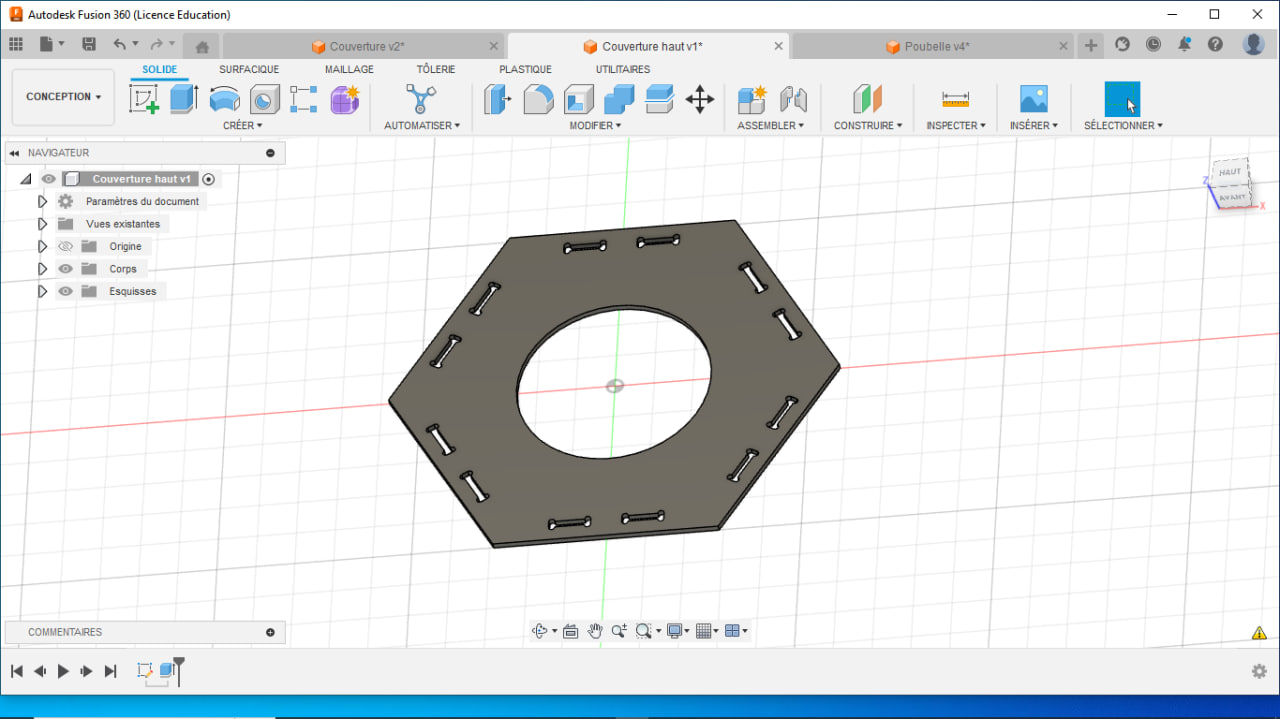
Cutting with large CNC
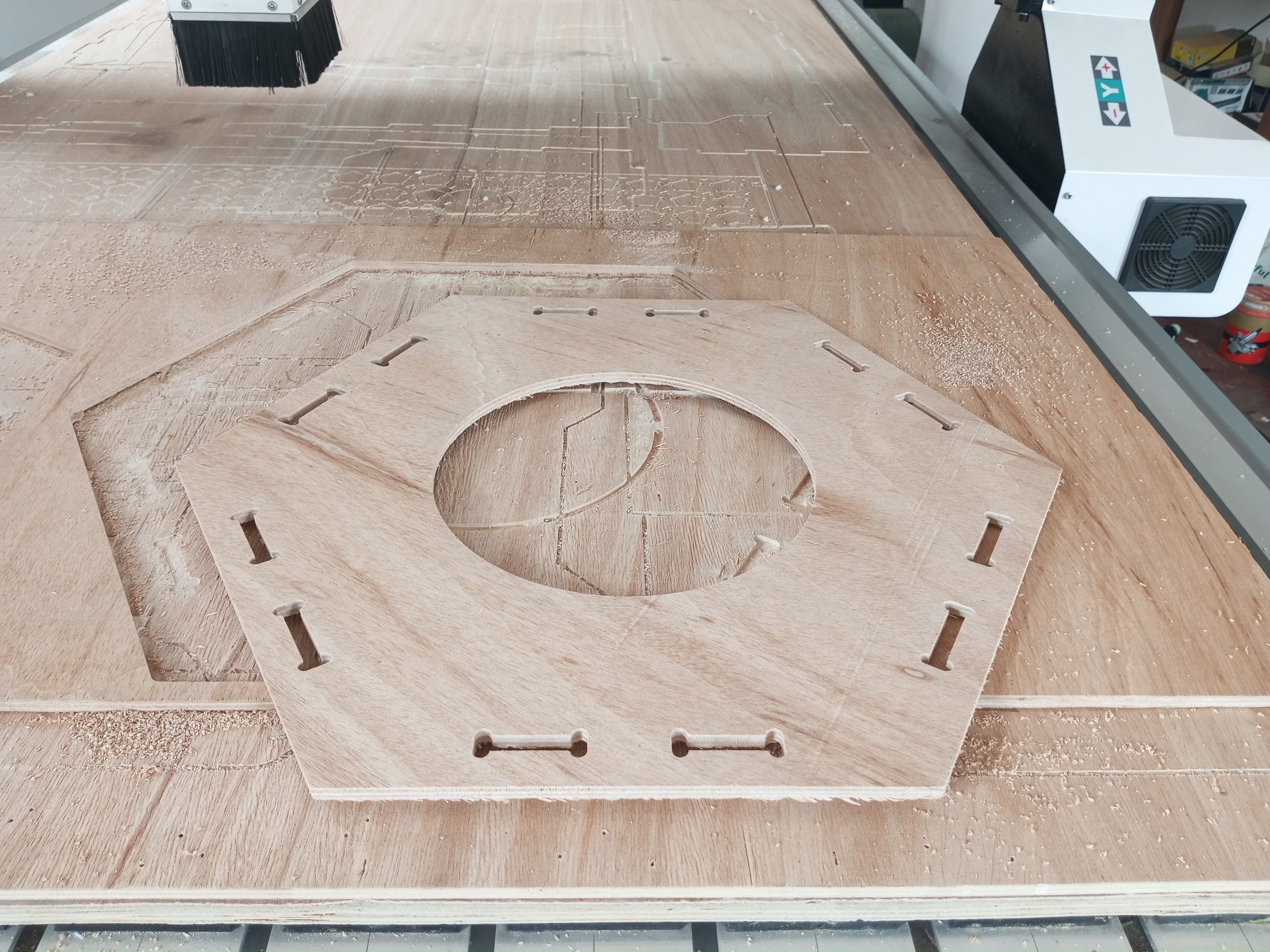
Assembly
What processes were used¶
The process used can be described as follows:
Making the garbage can
-
3D modeling of the various parts and cutting with the large CNC machine
-
Assembling the different parts to form the bin
Production of customized printed circuit boards
-
Circuit design in Kicad and milling on the small CNC
-
Soldering the various components to the board
Programming the various boards
3D modeling and printing of the electronic box
Assembling components and connecting boards in the electronics box
Fixing the electronics box to the waste garbage can
What questions were answered¶
Below are the questions that were resolved at the end of the work - Our garbage can detects presence in its environment and emits a sound to be identified - At a certain distance from the human, it starts displaying messages on its screen.
- As the human gets closer and closer to the garbage can, the sound gets louder.
What worked? What didn’t¶
What worked
- I2C communication between the XIAO ESP32C3 board of the output devices and the XIAO SAMD21 board of the input devices.
- The information is displayed on the screen as required.
- The speaker works well too.
- Our powerbank powers the system well.
What went wrong
For this first spiral of the project, everything worked, but sometimes it takes a while for the loudspeaker to start emitting sound.
How was it evaluated¶
To consider the project a success in this first spiral, here are a few essential points to check.
-
The garbage can must be able to detect presence within a certain radius of its environment and emit a sound.
-
The garbage can must be able to display messages on its LCD screen at a certain distance from a person.
However, new functionalities are planned to be taken into account in spiral 2 of the project, such as: - The garbage can distinguishes between humans and animals before interacting with them.
- The dustbin reads out audio awareness messages via its loudspeaker.
And the project would be a complete success.
NB¶
Please note that for this project we will have two versions of the garbage can. One for inside the building, as in the corridors, and the second for outside. In the first, intended for the inside, the structure of the garbage can will be made of wood with a special artistic touch, and the electronic circuit will be powered directly from an electrical socket via a small transformer. As for the second, which will be installed outdoors, its structure will be mainly made of plastic and the electronic box will be powered by a battery that can be recharged by a photovoltaic panel connected to it. We’ve used power for this first spiral, but here are the different power sources we’ll be using in future spirals.